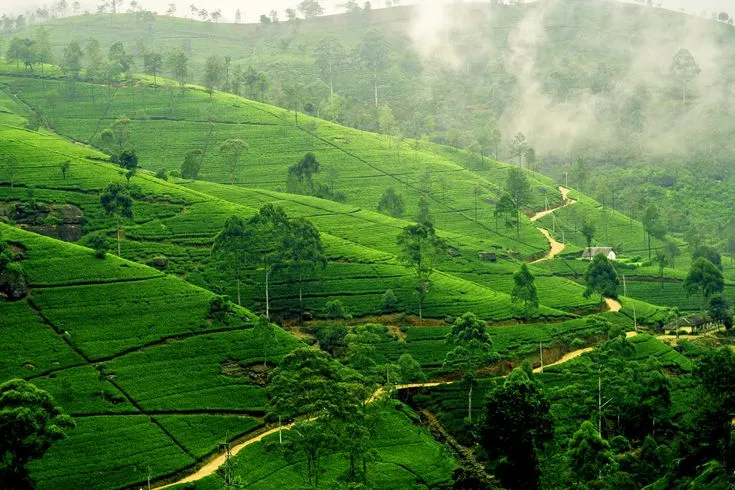Introduction: A Symbol of Peace in the Wild
In the quiet heart of Sri Lanka, where Kalawewa’s ancient trees cast long shadows over still waters, there lived an elephant who was far more than just another wild animal. Bathiya, known affectionately as “භාතිය ඇතා” to locals, was a majestic tusker one of the rare Asian elephants with long ivory tusks that inspire both fear and wonder.
Yet Bathiya was no menace. Calm, dignified, and gentle, he became a living symbol of peaceful coexistence. Villagers admired him, children loved him, and wildlife photographers travelled for miles to capture his stately presence. He roamed Kalawewa National Park and the surrounding reserves without causing conflict, demonstrating that harmony between humans and the wild was not just possible but real.
The Tragedy of June 2025: When Bathiya Fell
Bathiya’s story took a cruel and deeply saddening turn in June 2025, when news spread that he had collapsed near the Polpithigama tank. Locals found him lying in shallow water, his front leg swollen and his body weakening. He could not rise, yet he had not given up.
For days he lay there, still alive and fighting. He consumed nearly 200 kilograms of food daily, attempted to turn himself, and even made determined efforts to stand. These were not the actions of an animal surrendering to death, but the desperate fight of a creature determined to live.
Despite this clear will to survive, meaningful help came too late and was woefully inadequate.
A Failure of Care: Systemic Inaction and Neglect
Wildlife officers and veterinarians did visit Bathiya, administering injections and leaving, claiming later that they had spent Rs. 500,000 on antibiotics as though that alone proved care. But what Bathiya truly needed was immediate, practical intervention: a lifting structure to help him stand and avoid organ failure, proper scanning to diagnose his injury, and a comprehensive plan for ongoing treatment.
None of these essentials was in place. When volunteers and engineers offered to build a lifting frame at no cost, their offer was ignored. Bureaucracy chose to wait and watch, as Bathiya struggled in the mud, suffering needlessly. This was not only a tragedy for one elephant but also a stark exposure of how unprepared Sri Lanka is to save even its most famous wild inhabitants.
A Mirror to Elephant–Human Conflict in Sri Lanka
Bathiya’s fate is not an isolated tragedy. It is symptomatic of the broader, escalating conflict between humans and elephants across the country. As human settlements, farmland, and roads encroach upon elephant habitats, encounters become inevitable and often deadly.
Elephants raid crops because their forest corridors have been destroyed or degraded. Farmers, in turn, deploy electric fencing, traps, and firearms to protect their livelihoods. The result is hundreds of elephant deaths each year, alongside human casualties.
Bathiya was the rare exception he was not known for crop raiding or aggression. He stood as proof that coexistence was possible. Yet even he became a victim, not of a farmer’s weapon but of our systemic inability to act with urgency and compassion. His story forces us to confront the uncomfortable truth that even when conflict is absent, the state’s infrastructure and planning for wildlife care remain deeply inadequate.
What Bathiya’s Fight Reveals About Our Priorities
Bathiya’s ordeal was not just about the failure to save a single elephant. It was about exposing the reactive and under-resourced approach to conservation that prevails in Sri Lanka. Responses to wildlife crises are slow, fragmented, and bureaucratic.
Veterinary teams often lack mobile scanning equipment, trained staff, and even basic resources such as elephant lifting frames. Offers of help from volunteers are met with suspicion or indifference. Local knowledge and urgent pleas for help go unheard.
These failures are not merely technical but moral. They reflect an attitude that views wildlife not as fellow inhabitants of this island but as problems to be controlled or curiosities to be admired only until the moment they need real care.


The Need for Urgent Reform
If Bathiya’s death is to mean anything, it must become the catalyst for genuine reform in how Sri Lanka approaches its wildlife. Elephant–human conflict will not disappear overnight. But it can be managed with far more foresight, empathy, and professionalism.
There must be clear, well-funded wildlife rescue protocols with trained responders and standard operating procedures for injured elephants. Veterinary services need mobile units equipped for scanning, treatment, and stabilisation in the field. Elephant lifting frames and rehabilitation centres must be strategically established to ensure rapid response capability.
Crucially, local communities need to be engaged as genuine partners in conservation, not treated as obstacles or passive observers. Better land-use planning must aim to reduce conflict zones between farms and elephant corridors, preserving the habitats that elephants need to survive without coming into conflict with humans.
A Final Reflection: Honouring Bathiya’s Spirit
Even as his body failed him, Bathiya did not stop fighting. He continued to eat, responded to those who visited, and tried repeatedly to stand. In his quiet, uncomplaining struggle, he showed us something both humbling and profound: the will to live matters; dignity matters; and how we treat those who cannot speak for themselves is the true measure of our humanity.
If we cannot save the Bathiyas of this country, what hope is there for the rest?
Bathiya’s story must not be allowed to fade away as just another sad tale passed around on social media. It must become the turning point that pushes us to demand more from our institutions, our leaders, and ourselves. Let us choose to remember him not with silence but with determined action. For Bathiya, and for all the wild souls who still trust us to care.



